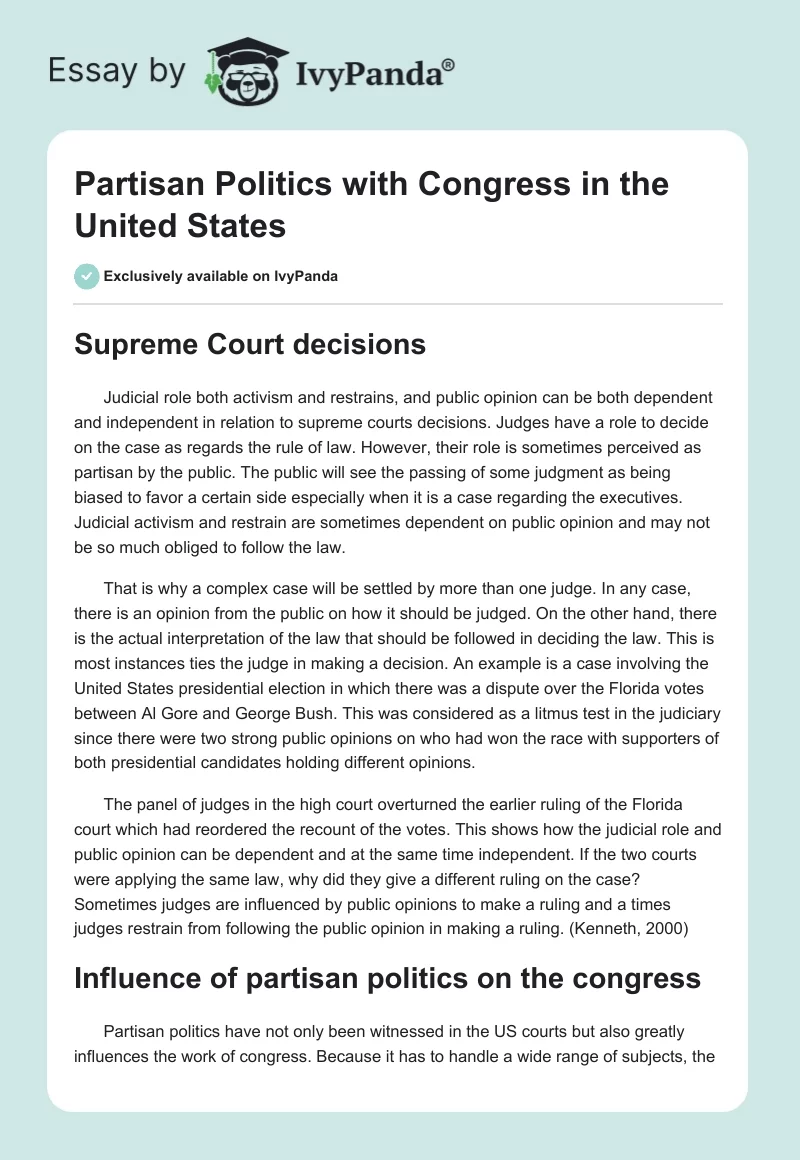Supreme Court decisions
Judicial role both activism and restrains, and public opinion can be both dependent and independent in relation to supreme courts decisions. Judges have a role to decide on the case as regards the rule of law. However, their role is sometimes perceived as partisan by the public. The public will see the passing of some judgment as being biased to favor a certain side especially when it is a case regarding the executives. Judicial activism and restrain are sometimes dependent on public opinion and may not be so much obliged to follow the law.
That is why a complex case will be settled by more than one judge. In any case, there is an opinion from the public on how it should be judged. On the other hand, there is the actual interpretation of the law that should be followed in deciding the law. This is most instances ties the judge in making a decision. An example is a case involving the United States presidential election in which there was a dispute over the Florida votes between Al Gore and George Bush. This was considered as a litmus test in the judiciary since there were two strong public opinions on who had won the race with supporters of both presidential candidates holding different opinions.
The panel of judges in the high court overturned the earlier ruling of the Florida court which had reordered the recount of the votes. This shows how the judicial role and public opinion can be dependent and at the same time independent. If the two courts were applying the same law, why did they give a different ruling on the case? Sometimes judges are influenced by public opinions to make a ruling and a times judges restrain from following the public opinion in making a ruling. (Kenneth, 2000)
Influence of partisan politics on the congress
Partisan politics have not only been witnessed in the US courts but also greatly influences the work of congress. Because it has to handle a wide range of subjects, the US congress is divided into committees each dealing with a different issue. There are more than 20 standing committees in the US congress. These committees deal with a specific subject of concern and do not leave politics out of their work. Partisan politics has a lot of influence on these committees. They influence policies made by individual members of the house. There is a lot of lobbying in voting for different issues that have to pass in each committee. This has some positive and negative effects on the working of the committees. But it has an advantage that any member can influence others and help to pass a policy that would have otherwise failed.
But his influence of partisan politics in these committees works against the good of the people when committee members take sides with their party of affiliation even on a matter that requires logical reasoning. In voting for the war in Iraq, many members took partisan politics and voted for the wish of their parties without having a good reason to support their votes. We can all see what it has brought to the American people. (Mebane and Sekhon, 2002)
Partisan politics is good if committee members gangs up to vote for an issue that will help the people that they represent. But this is not the case in most committees. Many members take side with the side they are sure that they will get a favor. They gang up with others when they know that they will gain by helping their fellow members to pass the issue. Party partisan has both negative and positive effects on the working of the committees depending on the issue at hand.
References
Kenneth, A. (2000). Assessing comparative legislative research. Michigan University Press.
Mebane, W. & Sekhon, J. (2002). Coordination and policy moderation at midterm. American Political Science Review, Vol. 96(1): 142-158.


